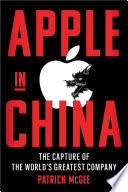
From "Apple in China"
Steve Jobs's Return and the iMac's Design and Manufacturing Struggle
Key Economic Insight
Gil Amelio's tenure as Apple CEO, from February 1996 to July 1997, was marked by a misdiagnosis of Apple's problems, focusing on efficiency rather than a lack of hit products. Although he took crucial steps like selling the Fountain factory, securing financial extensions, and raising 661 million dollars, his most significant decision was recognizing the need for a new operating system, leading to the acquisition of NeXT in December 1996 for over 400 million dollars. This 'outrageous' deal, widely considered desperate, brought Steve Jobs, his advanced NeXTStep OS (described as 'five to seven years ahead of everyone else'), and 300 talented people back to Apple.
Jobs, initially demurring the CEO role, spent summer 1997 investigating Apple, diagnosing it as unfocused, slow on important projects, and having lost relevance. He revealed a plan to cut 40 products down to four core offerings (consumer/professional desktop/portable computers) and initially envisioned a network computer (NC) priced around 799 or 999 or 1099 dollars as a comeback product. This period culminated in his acceptance of the interim CEO role in September 1997, marking his full return twelve years after he first left, and the launch of the iconic 'Think Different' ad campaign, which audaciously repurposed Apple's minority market share into an image of maverick creativity, albeit with a controversial decision to remove the Dalai Lama from Asian versions of the campaign to appease China.
The design and manufacturing of the iMac, code-named 'Columbus,' became a critical test for the newly focused Apple and Steve Jobs's vision. Jobs, collaborating with lead designer Jony Ive, pushed for a 'lickable,' egg-shaped, translucent design, radically different from any previous computer. However, Apple's veteran product design engineers, led by Chris Novak, deemed the prototype 'unmanufacturable' due to complex features like 'undercut city' recesses and perpendicular texture lines that defied existing plastic injection molding tools and structural integrity challenges for its recessed handle. Despite fierce internal resistance and Jobs's 'explosive rage-fueled profanity' and threats, an external consultancy confirmed the design's structural flaws, leading to a 'hard reset.' Ive, recognizing the limits, made design tweaks like vertical pinstripes and a foggy transparent case, allowing engineers to implement the vision, while the arduous process weeded out resistant engineers and fostered a new culture of design-led, high-quality product development under Ive's now-amplified influence.
📚 Continue Your Economic Learning Journey
Access the complete Apple in China summary with audio narration, key takeaways, and actionable insights from Patrick McGee.